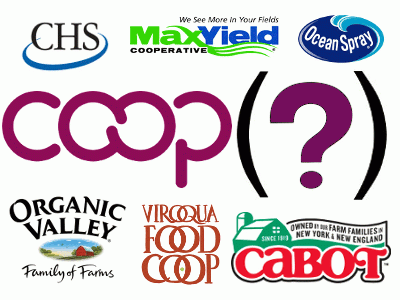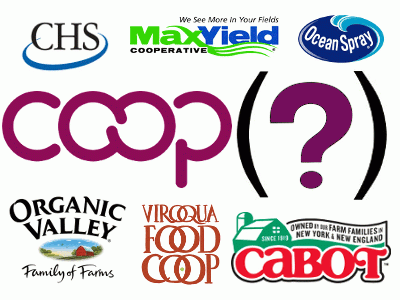
Thinking about Structure, Principles and Politics
 The recent article in GEO’s newsletter about corporate cooperatives raised some interesting questions about the nature of cooperatives. It might be useful to briefly consider the distinctions between the cooperative structure, cooperative principles, and political agendas.
The recent article in GEO’s newsletter about corporate cooperatives raised some interesting questions about the nature of cooperatives. It might be useful to briefly consider the distinctions between the cooperative structure, cooperative principles, and political agendas.
Co-operatives are, at their core, entities that are owned and controlled by their member owners, and operated to provide benefits to those member owners through use or patronage.
This structure subordinates the interests of capital to member interests, which are democratically defined. As a result, cooperatives can be a powerful tool for a progressive agenda. They can provide an alternative to large-scale corporate capitalism, in which the interests of capital override those aspects of community and economic life that affirm and support individual well-being.
While these progressive goals align with cooperative structure very well, the member interests that control a cooperative do not necessarily equate to certain political or social values. Those interests are as varied as the membership groups that own the cooperative, and the co-op will be operated to deliver benefits that meet the needs of the members.
As an example, both CHS and CROPP Cooperative (the latter markets products under the Organic Valley brand), are farmer cooperatives owned and governed by their producer members. They are operated to provide benefits back to those members. That one co-op supports conventional agriculture, and the other organic, is not a function of the cooperative structure, but rather of the priorities and needs of the co-op’s member owners.
As an extension of these interests, both cooperatives pursue affiliations in other membership organization that support the interests of the co-op and its members. Again, these affiliations may or may not be similar in political outlook: the National Cooperative Business Association (CHS and CROPP/Organic Valley), the National Council of Farmer Cooperatives (CHS), and the Organic Trade Association (CROPP/Organic Valley).
In comparing different types of cooperatives, “corporate” has been sometimes equated with a corporate capitalism in which capital interests drive all decisions. As has been noted, a corporation is simply a business entity that legally exists apart from those that own it or do business with it.
Under Wisconsin law, for example, cooperatives are usually incorporated as corporations under a cooperative business statute. As corporations, cooperatives can enter into contracts, assume liabilities, and generally conduct business as an entity that is separate from its owners. The Wisconsin cooperative corporation statute also describes the ownership and control structure, and the methods of distributing net earnings based on patronage, that are unique to the cooperative firm.
The cooperative corporate structure can, by definition, support a broad range of agendas and interests.
Cooperatives are no different from any other business in that they need capital to start up, reinvest or expand. When these capital requirements can’t be met by the members who own the cooperative, some state laws (Wisconsin and Minnesota included) allow cooperatives to raise money by issuing preferred stock that can be purchased by nonmembers. Purchase of the preferred stock does not, in these cooperative corporations, establish member ownership or member voting rights.
Preferred stock has been used by co-ops that vary in size and sector: CHS, Organic Valley and Viroqua Food Co-op (a small rural cooperative grocery store in Viroqua, WI) have all issued preferred stock as a way to raise money for co-op improvements that will better meet the needs of the member-owners.
The cooperative corporate structure can, by definition, support a broad range of agendas and interests. In considering the nature of cooperatives, one could ask if the seven cooperative principles function as a more accurate yardstick for defining a cooperative. Certainly the principles support the triple bottom line orientation of progressive cooperative enterprises. However, even those principles, including education and concern for community, could be interpreted differently as a result of membership orientation and priorities.
CHS, as a successful agricultural cooperative with roots in the early 20th century, substantially supports many cooperative education programs and co-op development initiatives. While these programs may reflect a broad range of political perspectives, all share a focus on cooperative education, broadly defined. Many rural cooperative businesses are active partners in their local communities, reflecting another approach to a cooperative concern for community.
The application of cooperative principles to such pressing issues as climate change, livable wages, and the role of ownership and corporate interests in a civic democracy are worthy of debate and experimentation. As member-owned organizations, cooperatives have a unique opportunity to contribute to these discussions.
Citations
Lynn Pitman (2014). What's a "Real" Cooperative?: Thinking about Structure, Principles and Politics. Grassroots Economic Organizing (GEO). https://geo.coop/story/whats-real-cooperative

Comments
Purity
June 7, 2020, 11:42 am
What are critical number for real coop and plan innovative reporting methods for members?
Add new comment